Recordings
Unusual sound recording techniques
Designing the recording of such a project requires a different approach compared to stereophonic sound recording. In two-channel stereophony, a microphone pair is traditionally used, capturing a sort of "spatial photograph" of the musical formation in its acoustic environment. Based on this foundation, additional microphones are placed close to specific instruments or groups of instruments within the ensemble to enhance their clarity in the sound image produced by the main microphone pair. The pair is the furthest device from the sound sources: the distance between the pair and the source is adjusted to achieve the desired balance between direct and reverberated sound. The further the pair is from the sources, the more it emphasizes the room's acoustics. Each additional microphone is individually placed closer to its source to achieve the best compromise between sound quality and the crosstalk caused by nearby sources.
In our case, to achieve the best results during the convolution process, it is essential that the treated sound sources are free from any pre-existing acoustics. These sources are therefore recorded without using a pair, relying solely on close microphones, ideally in an anechoic chamber, to eliminate any reflections or reverberation inherent to the recording space. This approach allows each source to be processed individually in RoomZ.
Recording the narration
Recorded on 6 November 2024, in the anechoic chamber of Jussieu by voice actress Juliette Aver.
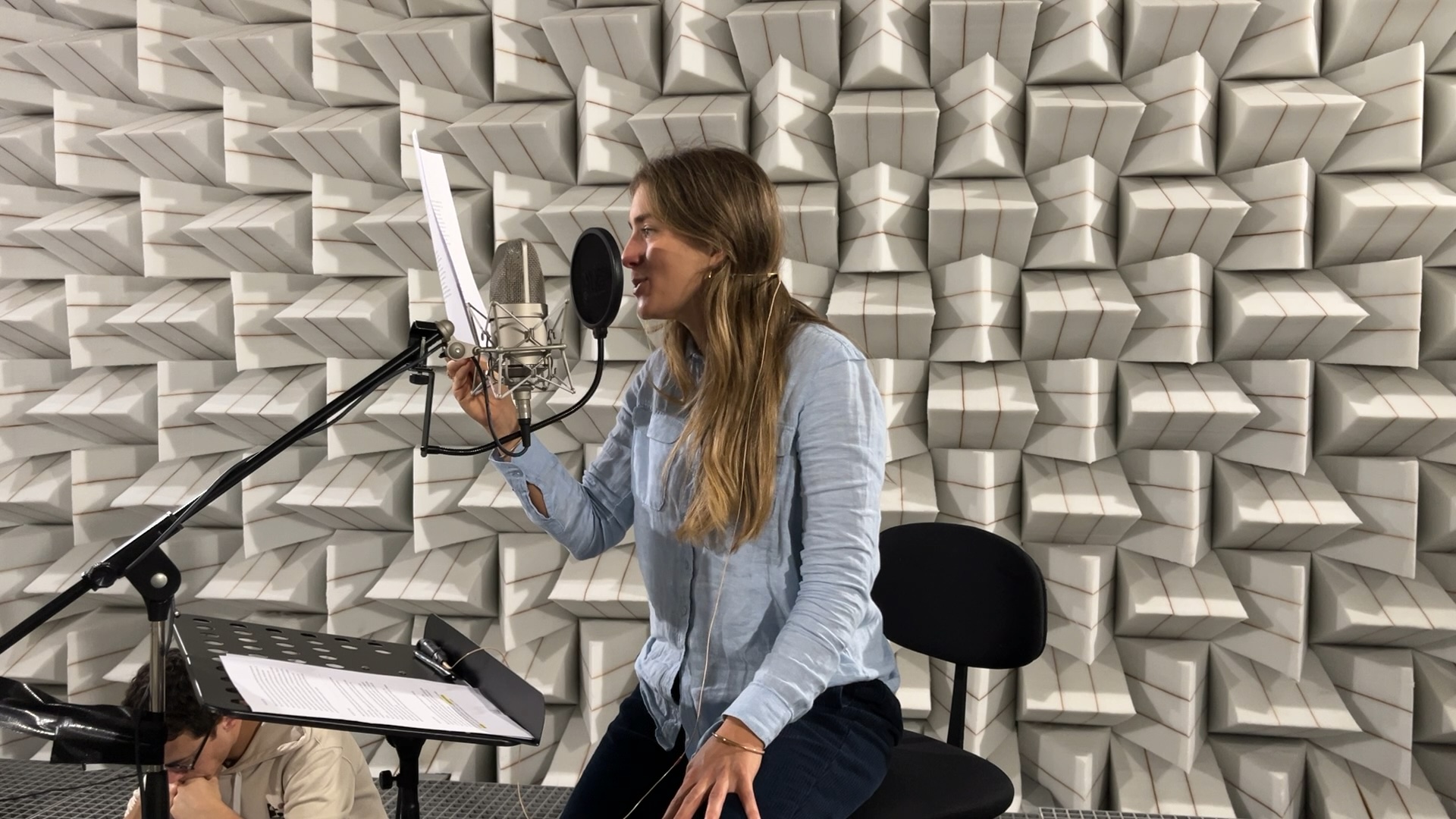
The voice was recorded using a Neumann M149 cardioid microphone positioned 40 cm from the actress. Other microphones were positioned to simulate different presence levels, providing a wider range of mixing possibilities:
- A DPA 4088 cardioid headset microphone
- A second Neumann M149 located 1.50 m from the actress
- A Neumann U87 cardioid microphone placed 2.50 m away
Our goal was to achieve, through mixing, the sensation of a voice accompanying the listener, positioned approximately one metre to the side. The choice of the M149 microphone at 40 cm was the most convincing for this effect.

Recording the 11 Works
Eleven pieces closely tied to the musical history of Notre-Dame were selected for the virtual concert, ranging from 12th-13th century organum to works from the 20th-century "revival" of the French organ school.
Scenes 01 and 02
- 01: Léonin, Organum Iudea et Ierusalem
- 02: Pérotin, Viderunt Omnes
Recording carried out on October 10, 2023, in the anechoic chamber of Jussieu with the ensemble Pérotin le Grand: 7 singers, including 1 soloist, 2 tenors, and 7 singers for the plainchant.
This anechoic chamber is an experimental space with absorbing surfaces (covered with acoustic absorbing wedges one metre deep, vibrationally decoupled from the building) designed to minimize acoustic reflections. The anechoic chamber at the Institut Jean Le Rond d'Alembert has a usable volume of 240 m³ and a floor area of 42 m².
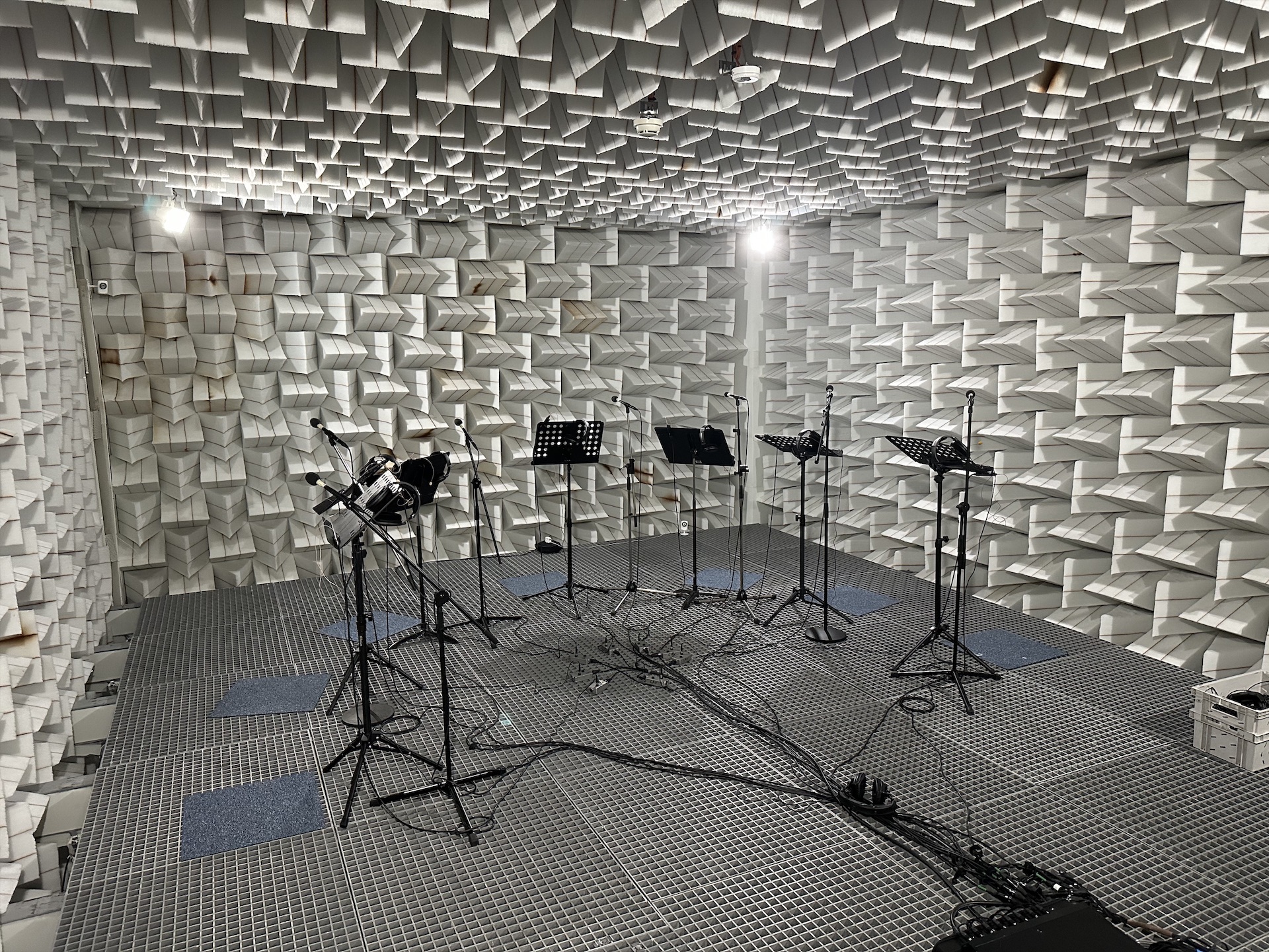
Positioning of singers and microphones during the recording in the anechoic chamber.
Each of the seven voices in the organum constitutes a distinct sound source: thus, seven microphones were used. After testing between DPA 4088 cardioid microphones and B&K/DPA 4007 omnidirectional microphones, the DPA 4088 was chosen. These microphones, mounted on headsets and attached to the singers, maintain a constant distance between the microphone and the singer's mouth regardless of their movements. Unlike DPA 4007 microphones mounted on stands, this ensures consistent sound quality for each voice.
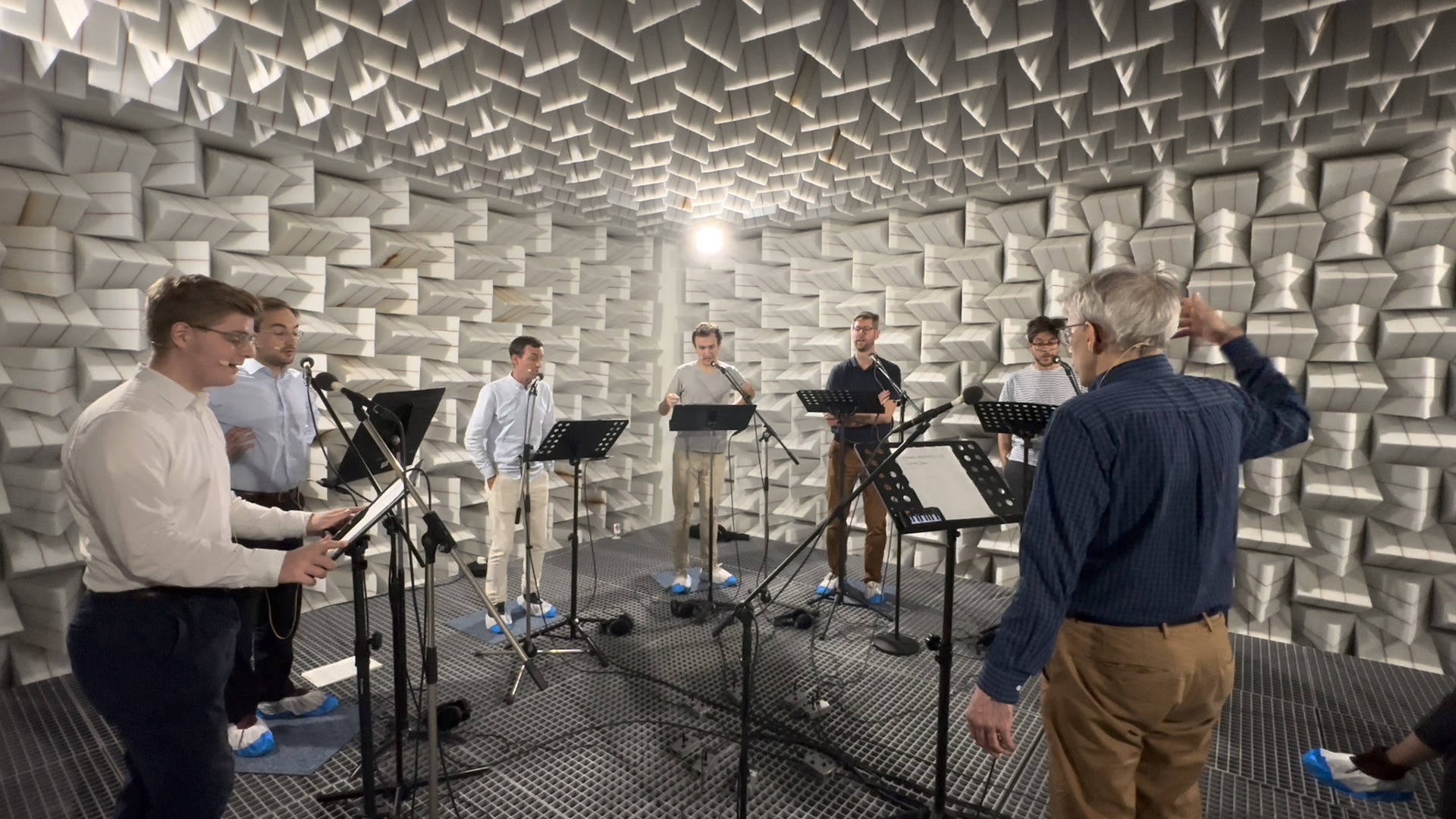
Singers during the recordings in the anechoic chamber.
Scenes 03 and 04
- 03: Philippe de Vitry, Adesto
- 04: Walter Frye, Ave Regina Coelorum
Recording carried out on December 19, 2023, in Bussy on Éric Brottier's organ, performed by Christophe d’Alessandro.
This recording was made in Éric Brottier's auditorium in Bouzy, Champagne. The instrument is a facsimile of a Salamander organ from Spain. It was chosen by Christophe d'Alessandro for the interpretation of these two pieces. It is believed to represent the first swallow's nest organ and the first gallery organ of Notre-Dame.
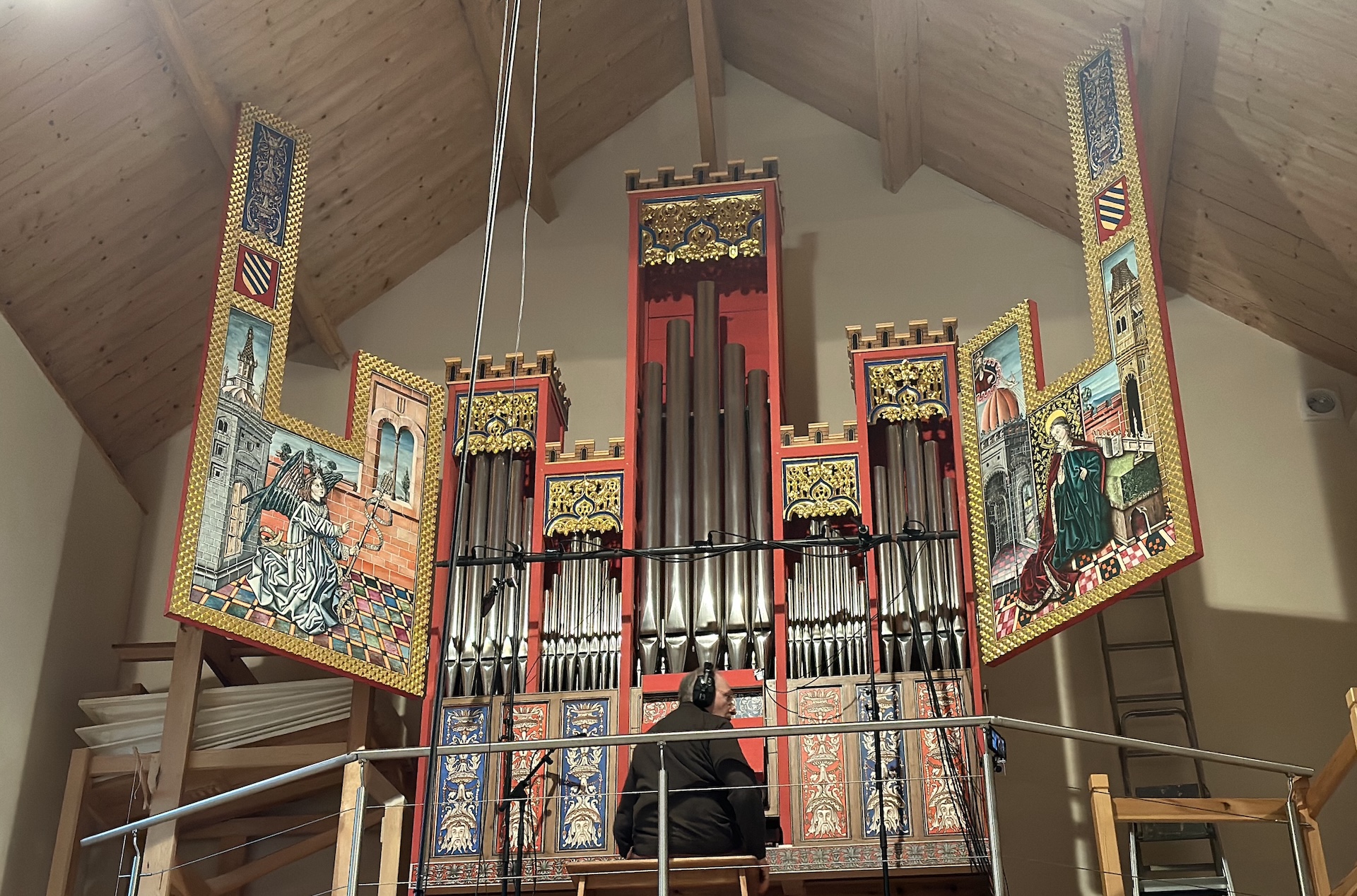
The sound of an organ results from various acoustic phenomena. Initially produced by the vibration of several pipes, the sound resonates inside the organ case before being emitted through the instrument's façade. This facsimile consists of around one hundred pipes, each of which constitutes a distinct sound source. While these pipes are spatially separated, they are grouped within an organ case divided into five sections.
A microphone array, consisting of DPA 4011c cardioid microphones (microphones 6 to 10), was positioned on a boom stand in front of the organ's façade, close to the display pipes. This array, processed post-production in RoomZ, allows for a realistic representation of the instrument's apparent width and sound radiation. This setup also aids in reconstructing the various planes of all the pipes within the compartments (close and distant planes).
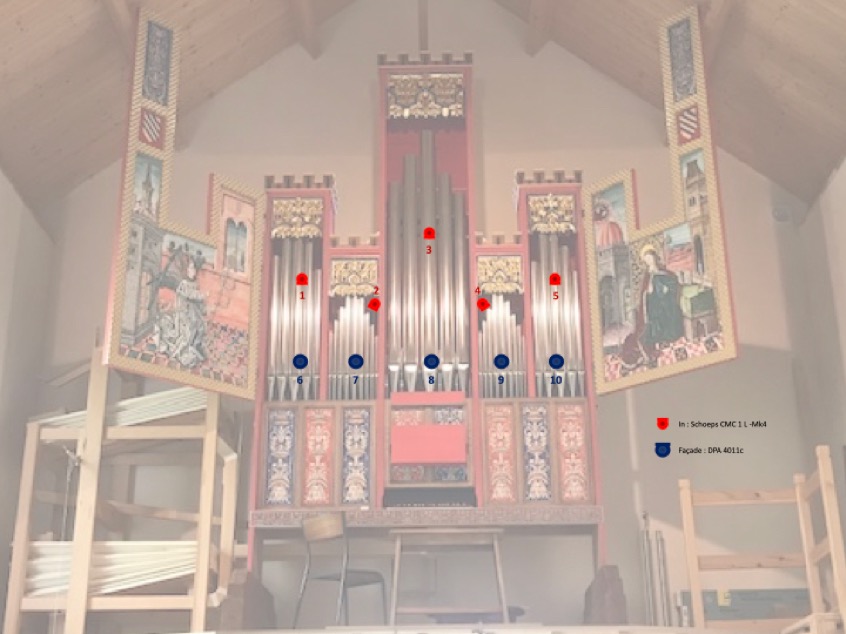
Microphone placement during the recording.
The organ case is divided into five shallow compartments, within which five microphones are positioned to achieve complete coverage of each section. These Schoeps CMC-1 L microphones, equipped with Mk4 cardioid capsules (microphones 1 to 5), are used to balance the instrument in post-production.
Scenes 05, 06 and 07
- 05: Antoine Brumel, Ave Maria Gratia Dei Plena
- 06: Matthieu Sohier, Kyrie de la Messe Vidi Speciosam
- 07: Henri Frémart, Credo de la Missa Eripe me, Domine
Recording carried out on January 12, 2024, on the Jeanne A. de Tarrazi Stage 2 at the Conservatoire de Paris, in collaboration with the Centre de Musique Baroque de Versailles (CMBV).
The Jeanne A. de Tarrazi stage was divided into two sections using heavy velvet curtains to reduce the overall volume of the room, which was too large for the ensemble and too reverberant for the project. Reflective surfaces were treated with Texaa acoustic panels, and carpets were laid on the floor to further limit sound reflections.
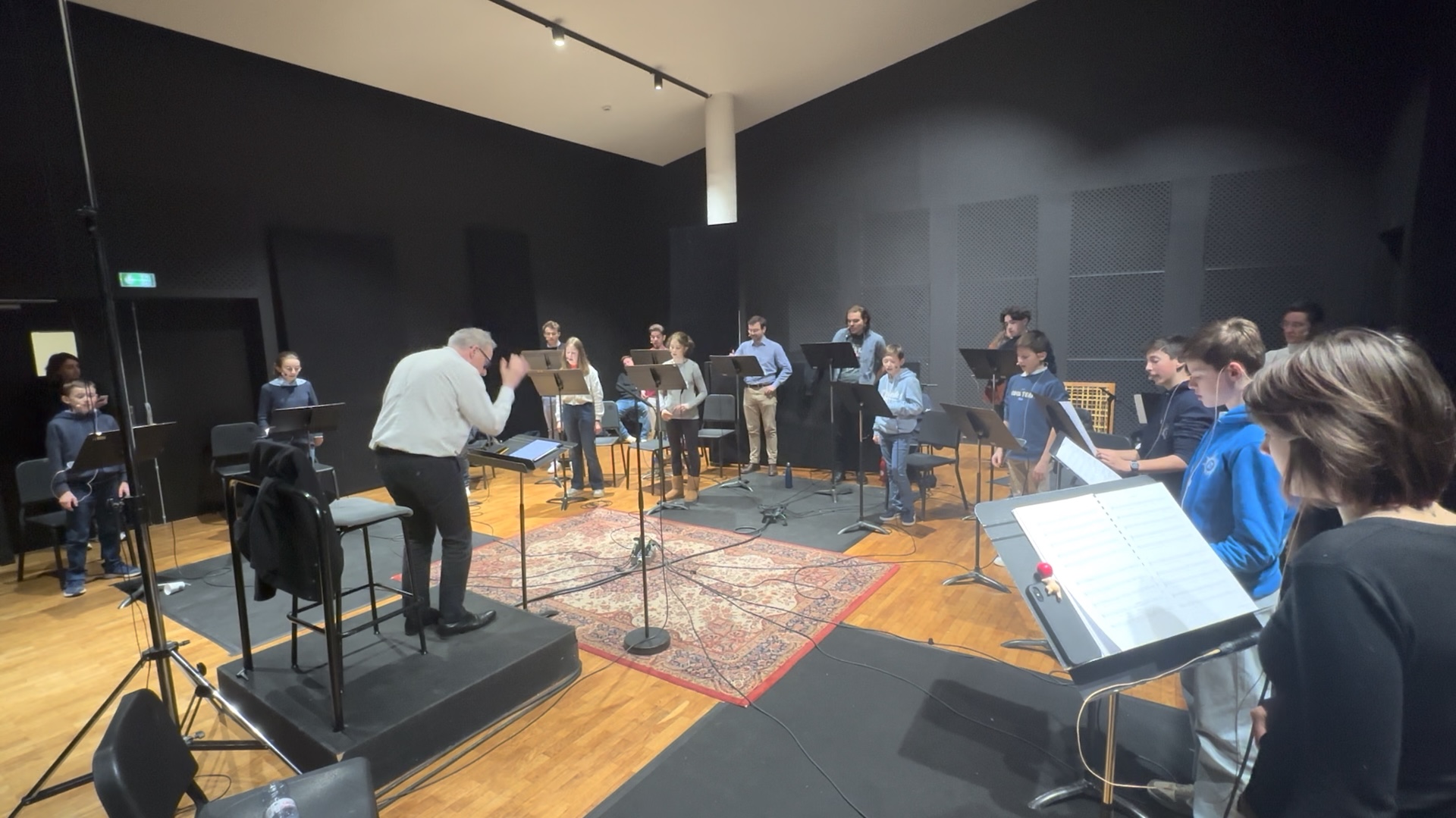
For Frémart's piece, the highly resonant organ was surrounded by absorbing panels to reduce crosstalk on the singers' microphones. Each of the ten voices of the singers and the six voices of the pages was treated as a distinct sound source, requiring the use of sixteen microphones. DPA 4088 cardioid headset microphones were selected for this purpose. These microphones, fixed securely to the singers, maintained a consistent distance between the microphone and the singer's mouth, regardless of their movements, thereby ensuring consistent sound quality for each voice.
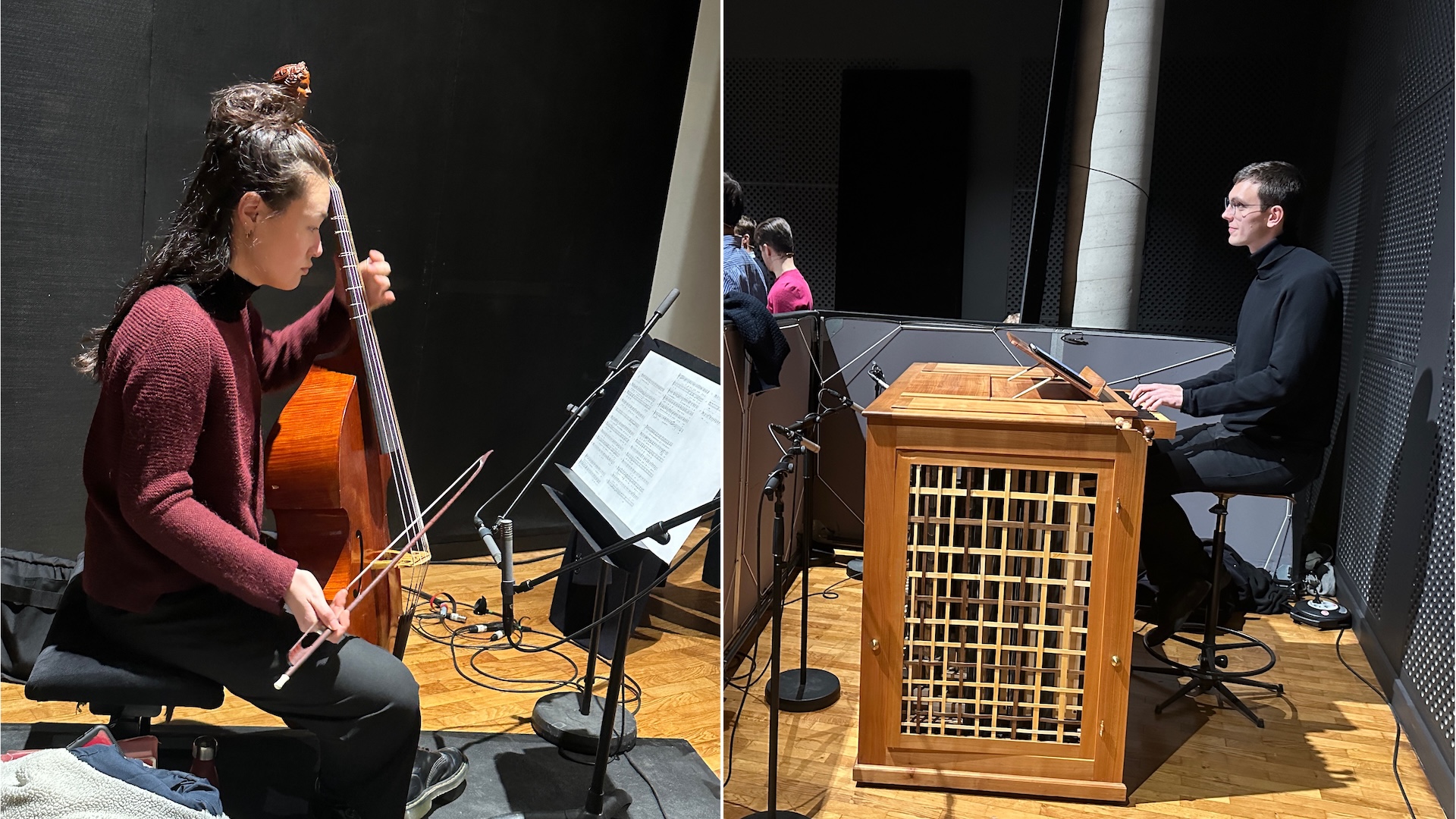
Frémart's work also included a continuo, composed of a chamber organ and a viola da gamba. The organ was equipped with a microphone array of three Neumann KM 184 cardioid microphones, while the viola da gamba was recorded using two Schoeps Mk4V cardioid microphones.
Scene 07: Charles Racquet, Fantaisie
Recorded on September 19, 2023, in the Amphitheater of the Philharmonie de Paris, on the Dupont organ, interpreted by Olivier Latry.
This recording was made in the amphitheatre of the Philharmonie de Paris, using the Jean-François Dupont organ built in 1995. This modern instrument is particularly suited for the performance of 17th and 18th century music. It was chosen by Olivier Latry for the interpretation of Charles Racquet's Fantaisie.
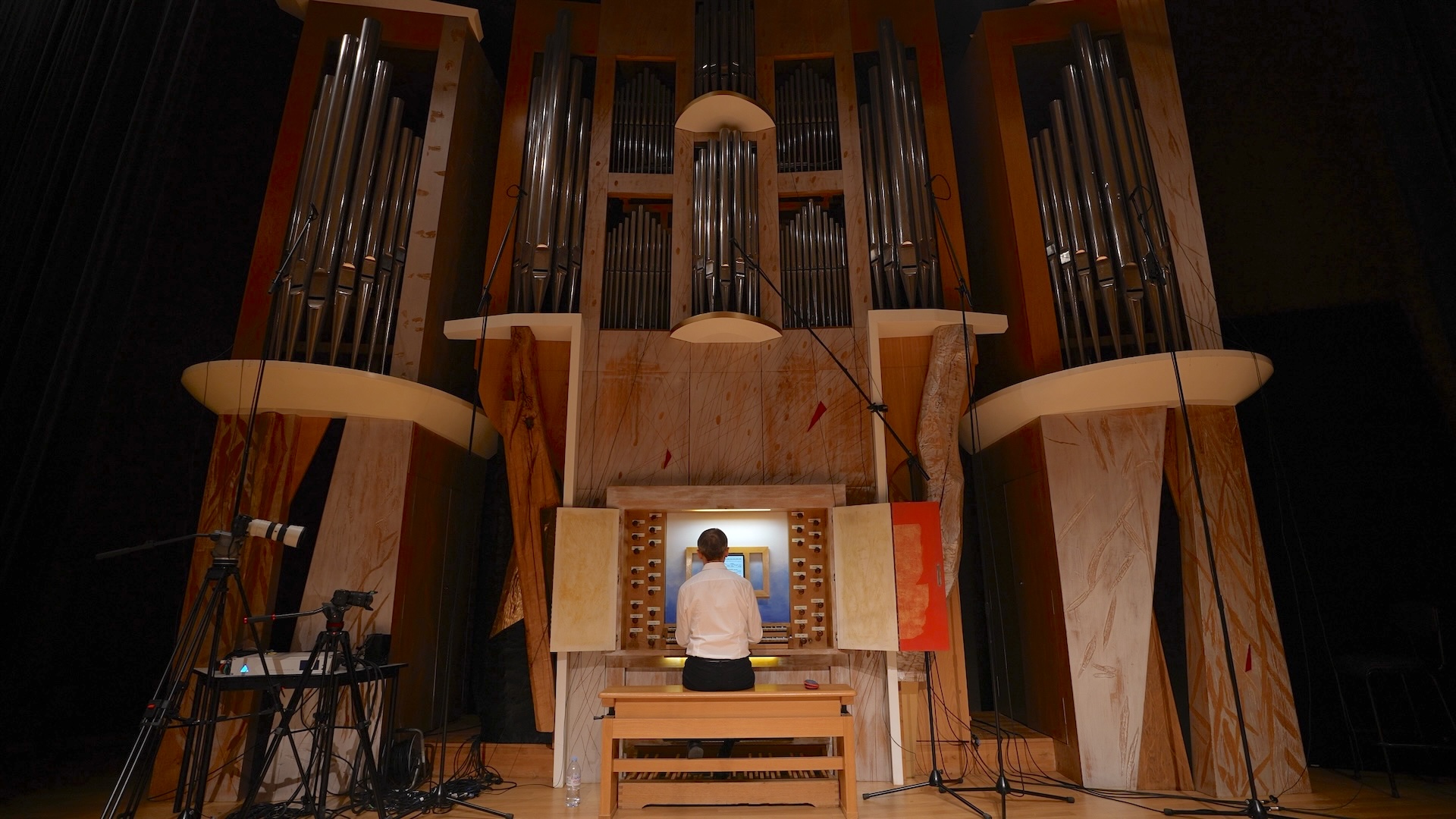
The organ is composed of hundreds of pipes, each serving as a distinct sound source. These pipes are grouped within a compartmentalised organ case divided into several sections. A microphone array, consisting of five DPA 4011c cardioid microphones, was positioned on stands in front of the organ's façade, aligned with the display pipes.
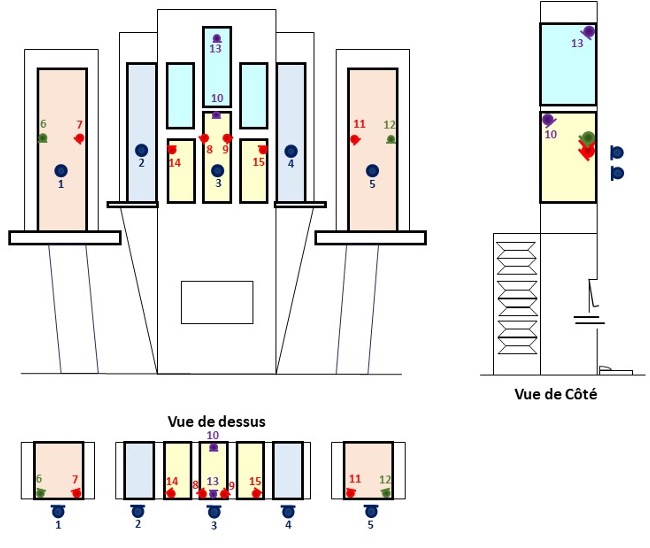
Microphone placement during the recording.
The pedal towers, located on either side of the grand organ, were each equipped with two internal microphones: one Schoeps Mk21 wide cardioid capsule and one Schoeps Mk4 cardioid capsule. Both were oriented towards the centre of the organ case to ensure uniform sound coverage.
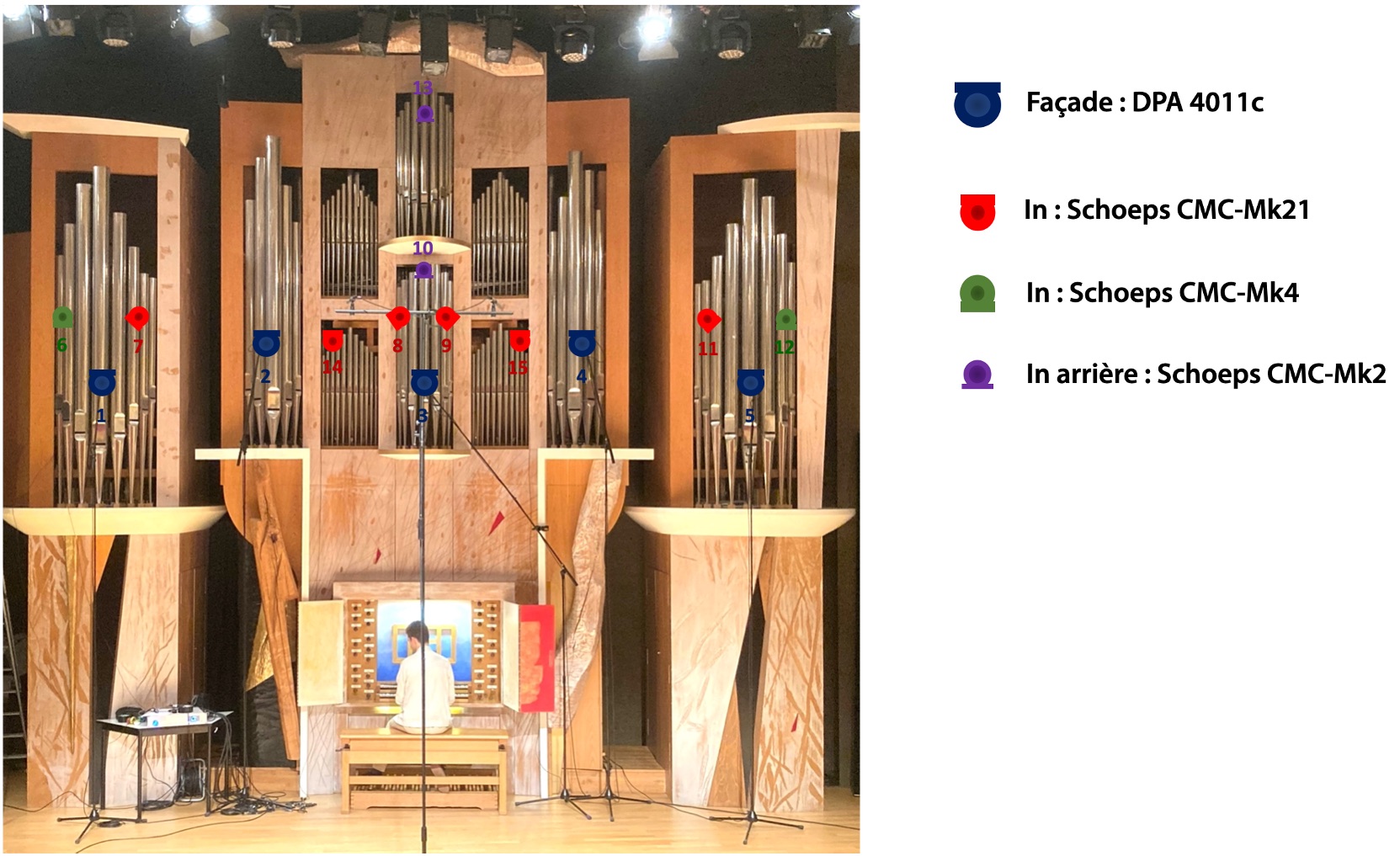
Microphone placement during the recording.
Scene 09: Jean-Baptiste Gossec, Hymne à la liberté
Recording carried out on April 25, 2024, in the anechoic chamber of Jussieu with Catherine Simonpietri’s vocal class.
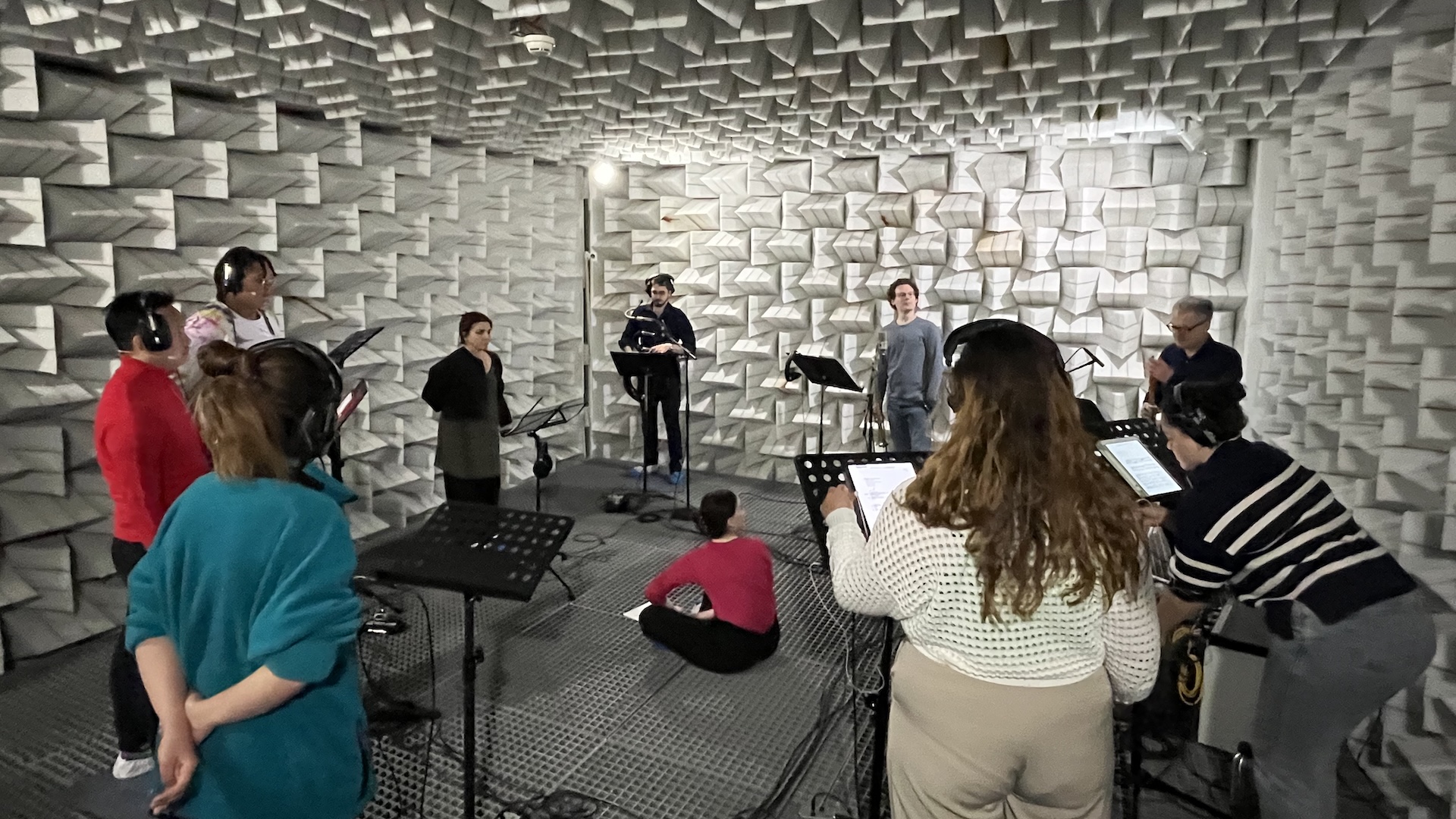
Singers were equipped with DPA 4088 cardioid headset microphones. The clarinet was recorded using a DPA 4099 attached to the instrument and a Neumann KM140 on a stand. The trombone was captured with a DPA 4099 fixed to the bell and a TLM 170 cardioid on a stand. Finally, the serpent was recorded with a DPA 4099 attached to the instrument and a KM140 on a stand.
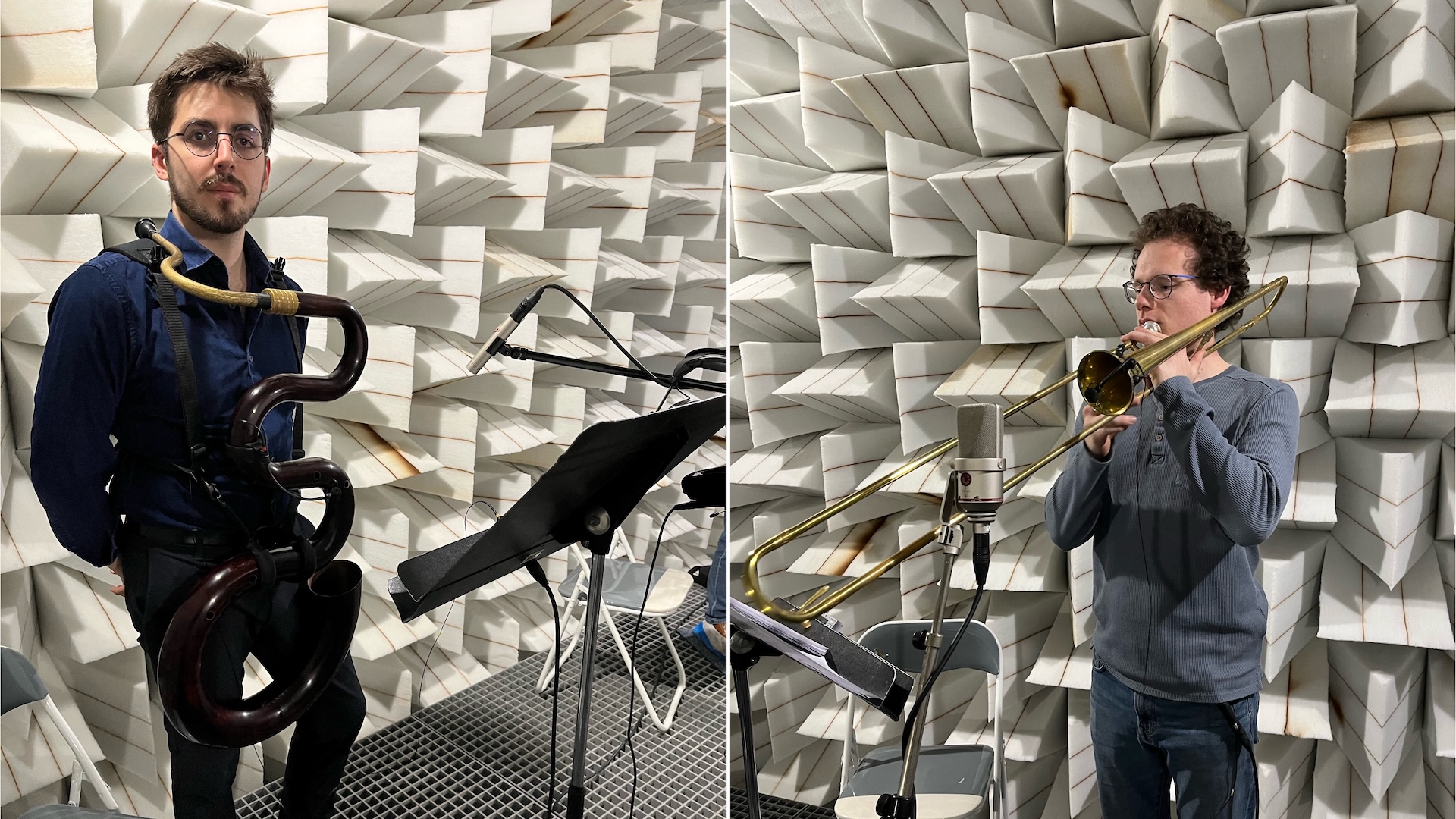
Scene 10: Jean-François Lesueur, Ouverture de la marche du sacre
Recorded on 11 December 2023, Grand Orchestra Stage Vincent Meyer, Conservatoire de Paris.
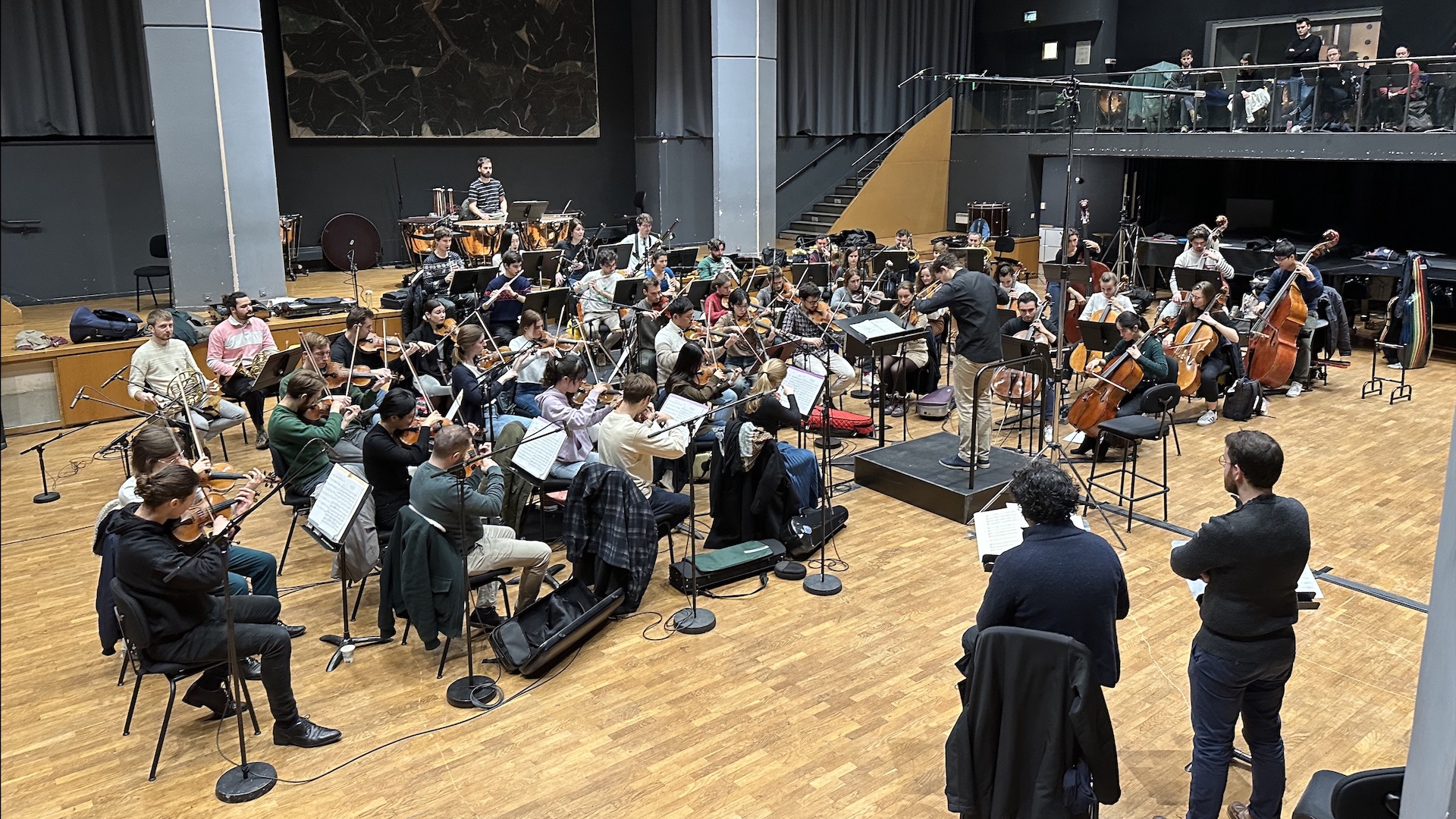
This piece was recorded on the large orchestra rehearsal stage Vincent Meyer at the Conservatoire de Paris. To minimize the acoustics of the recording location, each musician was recorded with a close microphone placed 30-40 cm from their instrument. The orchestra consisted of 48 musicians.

Microphone placement during the recording.
Scene 11: Louis Vierne, Carillon de Westminster
Recording carried out on October 9, 2023, on the Cavaillé-Coll organ of Saint-Sulpice Church, performed by Olivier Latry.
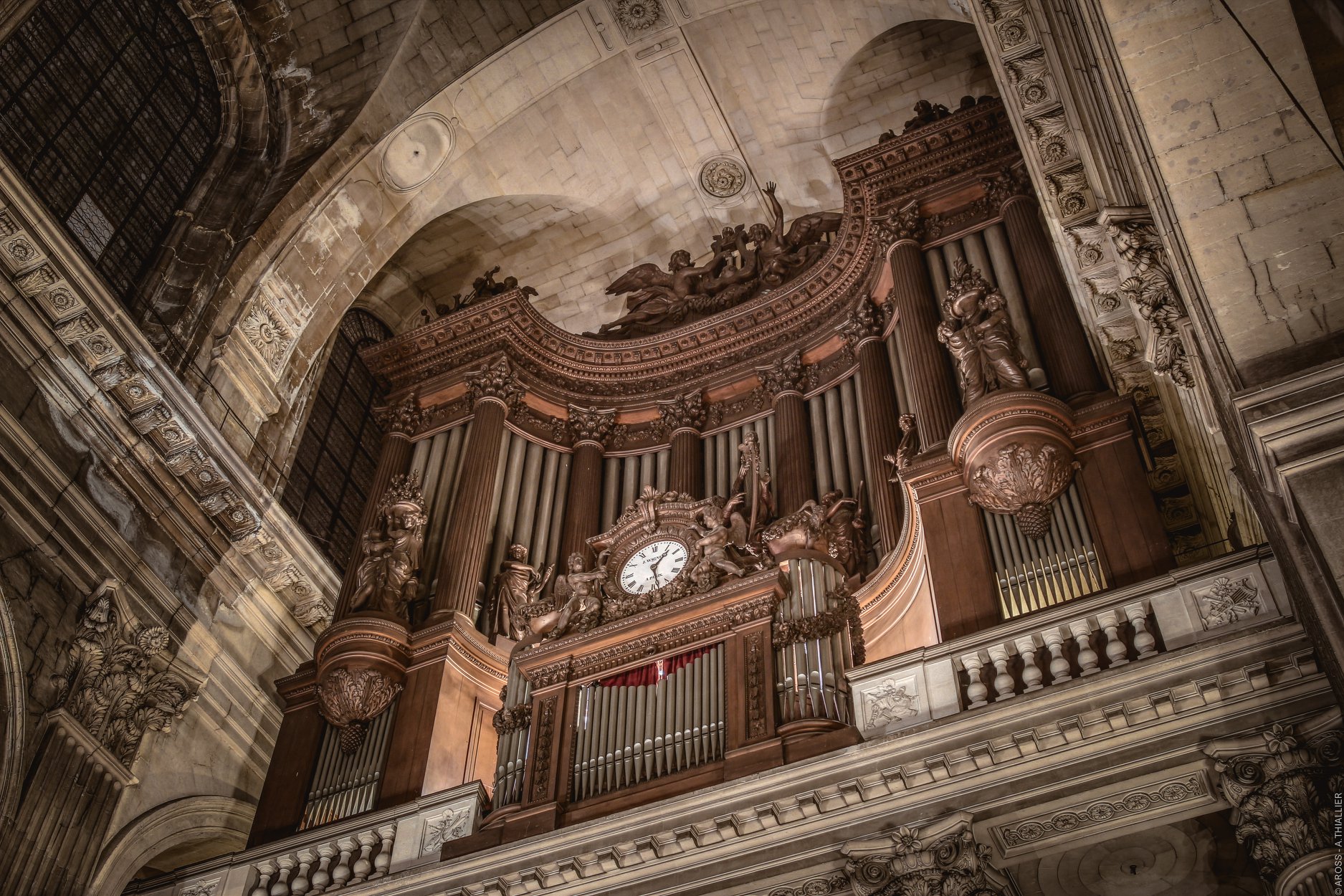
This recording was made at Saint-Sulpice church, whose Cavaillé-Coll organ, built in 1862, is similar to the one at Notre-Dame during Louis Vierne's tenure as organist. The Saint-Sulpice organ consists of approximately 7,000 pipes, each constituting a distinct sound source. These pipes are grouped in a compartmentalized organ case with several sections. A dual-level microphone array, composed of DPA 4011c cardioid microphones, was positioned in front of the organ façade.
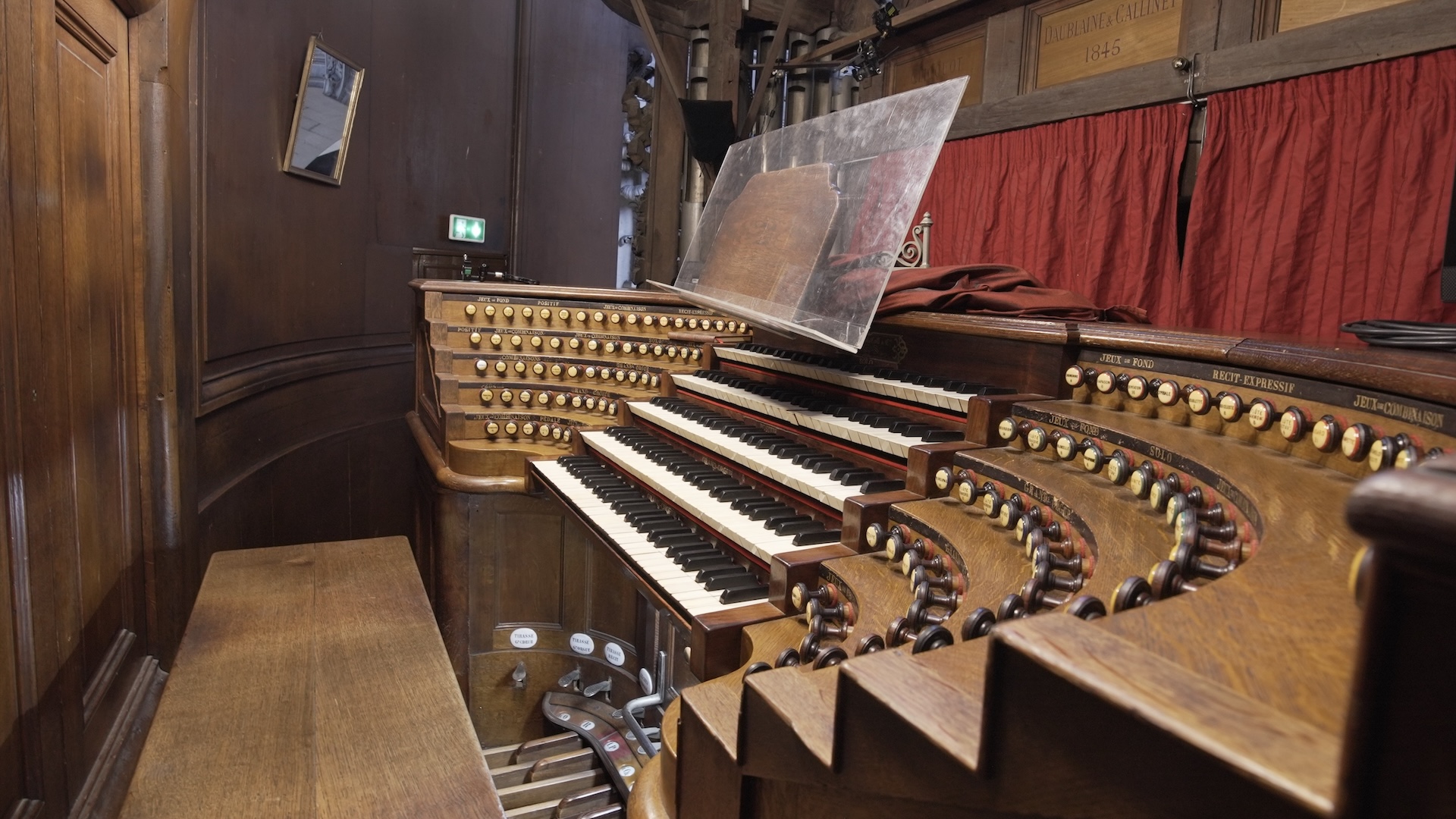
The pedal turrets on the C and C♯ sides of the grand organ are each fitted with two internal microphones: a wide cardioid capsule (between omni and cardioid), the Schoeps CMC 1 L – Mk21, and a cardioid capsule, the Schoeps CMC 1 L – Mk4 (mics 6, 7, 11, and 12). Both are aimed toward the center of the organ case to ensure even coverage. The central case is equipped with a pair of wide cardioid Schoeps CMC 1 L – Mk21 capsules (mics 8 and 9), placed inside behind the display pipes and pointing toward the center of the case. To achieve better coverage of this area, an additional Mk21 (mic 10) was installed at the back. In addition, two more Mk21 capsules (mics 14 and 15) are positioned laterally at the entrance of the case. A Schoeps CMC 1 L – Mk2 omnidirectional capsule captures and enhances the récit division located in the upper section of the organ case.
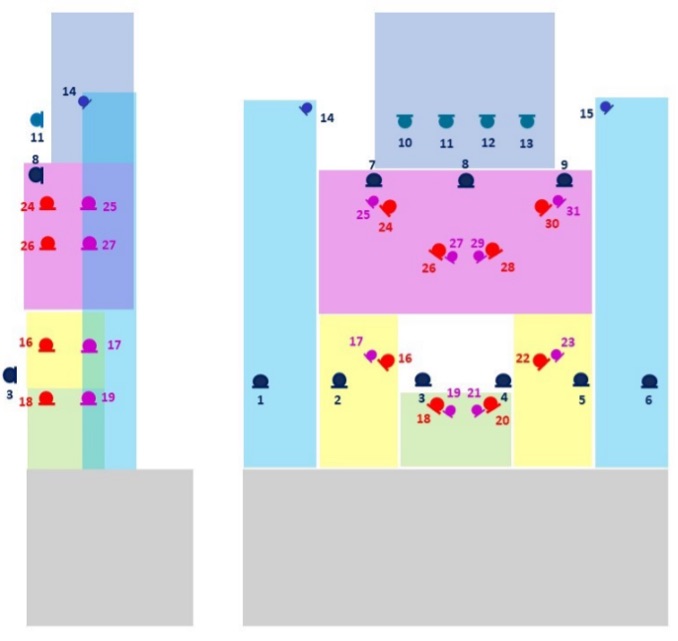
Microphone placement during the recording.